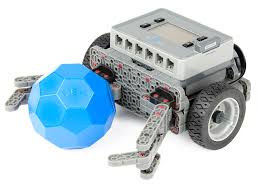Teaming up with Team Zero Robotics

Before being chosen to move on to the semi-finals this year, Lubbock High’s very own Zero Robotics Team had made it even further in the last three years, and are now the number one robotics team in Texas.
“I think we have a good chance of advancing.” Captain of the Zero Robotics Team, Junior, Skylar Myers said. “If we get there, we get to run our code on the actual International Space Station and see the satellites move.”
But what exactly is the Zero Robotics team? Robotics takes a lot of high level math and science knowledge that not a lot of people have, know about, or even want to do. However, robotics is really all about teamwork, and working as a team to complete specific objectives. Team Zero Robotics is teamwork and building yourself up both mentally and socially.
“They’ll actually all come up and work on the big T.V. here together,” Sam Black, Team Zero Robotics sponder, said,”They’ll watch the simulation together rather than individually and I think that help with building the whole teamwork thing.”
Other people think Zero Robotics is just another nerdy highschool club for really smart kids to go and build robots, but that’s not really what they do at all. In reality, Zero Robotics is actually a group of high school student in every grade level with different levels of knowledge coming together to write programs and code for robots in space. These space robots work for the astronauts in the International Space Station, which makes Zero Robotics sound about thirty times cooler than before, because who doesn’t think working for astronauts is cool?
“It’s really just working with a team, but on an even higher scale.” Mr. Black said.
After being chosen by them in the alliance round, the students on the LHS Zero Robotics Team are working together with a team from the San Francisco Bay area and a team from a small town in the Transylvania region of Romania. All teams are working to code a program that guides a small space robot called a Synchronized Position Hold Engage and Reorient Experimental Satellite (SPHERES) through a debris field to hook onto another incapacitated SPHERES robot. Although our team hasn’t submitted any code, they’re still watching as the leaderboard changes and waiting to see the result of the effort their putting into the program.
“The coding kind of goes on all the time,” Mr. Black said, “We have to really learn to understand movement and the physics behind maneuvering in zero gravity.”
This year, the team is hoping to make it to finals again and even win first place. The trickiest part of their programming is coding the robot to hook onto the other one without bumping them and sending them in opposite directions, or having the hooks slip off from each other, but once they have that down, they have high hopes for the competition according to Mr. Black..
“When you make those kind of accomplishments, it’s like ‘Yes! We did it!’.” Mr. Black said, “And when those rankings come out, you get excited, like ‘where are we – where are we?’.”
This most recent round wrapped up on December 7, but the competition is set on an undefined date in January of 2019.


